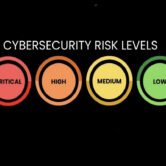
How do startups assess their cybersecurity risk levels?
Perform a Cyber Risk Assessment
- Identify all digital assets, including data, software, systems, and devices.
- Determine what information is sensitive, confidential, or business-critical.
- Evaluate how each asset is accessed, used, and stored.
- List potential threats (e.g., phishing, data theft, insider misuse).
- Analyze vulnerabilities such as open ports, weak passwords, or unpatched software.
Measure Likelihood and Impact
- Estimate how likely each identified threat is to occur based on past incidents or industry trends.
- Assign impact ratings based on financial loss, legal exposure, or business disruption.
- Use a risk matrix to prioritize which issues need urgent action.
- Balance short-term fixes with long-term structural improvements.
- Assign ownership for each identified risk category.
Review Technical and Organizational Controls
- Evaluate the presence and strength of current security measures.
- Confirm if tools like MFA, firewalls, and backups are in place and active.
- Assess employee awareness and training effectiveness.
- Test incident response readiness through tabletop exercises or drills.
- Include vendor and third-party risk reviews.
Monitor and Reassess Periodically
- Schedule routine risk assessments quarterly or after significant changes (e.g., new tools, product launches).
- Update risk register based on evolving threats or lessons learned.
- Incorporate feedback from audits, incidents, or customer demands.
- Track key risk indicators (KRIs) to measure risk levels over time.
- Adjust strategy and controls as the startup scales or enters new markets.





